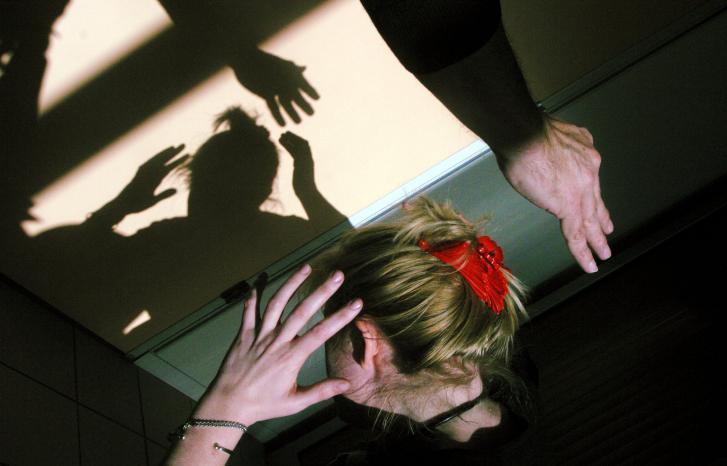These are the results presented in a new article from Norwegian Centre for Violence and Traumatic Stress Studies, NKVTS. In a Norwegian survey carried out among 1028 young people from age 14–17 years, 549 teenagers say that they’ve been in a romantic relationship. These respondents were asked whether they had experienced violence and about their feelings related to violent episodes.
Approximately thirty per cent had sent messages with sexual contents to a partner, also known as sexting. In total, 43 per cent of the participants had experienced violence in a relationship.
“The occurrence of violent experiences is clearly higher for those who send digital messages with sexual contents than for others,” says PhD research fellow at NKVTS Per Moum Hellevik.
The connection is clear. For those who send messages with sexual contents – whether pictures or texts – the occurrence of digital violence is five times as high as for others. The occurrence of physical violence is four times as high, psychological violence is 3.5 times as high, and the occurrence of sexual violence is 2.5 times as high.
“In general, there is a bigger chance of becoming a victim of intimate partner violence if you send messages with sexual contents. We’re not looking for cause and effect correlations in this study, but there is definitely a link here,” says Hellevik.
The results also show that girls are more exposed than boys are. Those with older partners are also more exposed, as are those who experience violence at home. The last group in particular.
“It’s sad. This proves to be the case again and again; those who are vulnerable on one area often become vulnerable on other areas as well.”
Don’t know what is violence
The term ‘violence’ covers a lot. Sexual violence covers everything from forced kisses to rape. Physical violence covers everything from pushing to punching and strangling.
In order to map digital violence, the researchers asked whether the teenagers had received hateful or threatening messages from their partners online or via sms.
Hellevik experienced that young people were surprised to learn about violence.
“Really, is that violence?” they may ask. Many don’t know where to draw the line.
“Really, is that violence?” they may ask. Many don’t know where to draw the line.
And if they’re in doubt, they ask friends, not adults. According to Hellevik, this may lead to unfortunate decisions, since friends their own age often don't have any more experience or knowledge to add.
“For instance, many of the participants brought up jealousy. What many adults would consider obsessive jealousy was considered romantic by some of the participants, like a proof of love.”
See also: Girls beaten by their boyfriends avoid the word 'violence'
Major gender differences

When the researchers asked what the participants felt when they were exposed to violence, the answers exposed major gender differences. The fifteen response alternatives varied from sad and frightened to loved and desired. Another alternative was ‘no effect’. The responses indicate that girls experience far more negative feelings related to violent incidents than boys. Approximately twice as many girls expressed purely negative feelings related to the incidents. This applied to all types of violence. When looking at purely positive feelings, the differences were even bigger, and the biggest difference was with regard to sexual violence.
“One per cent of the girls and thirty-five per cent of the boys had purely positive experiences of being exposed to sexual violence,” says Hellevik.
He thinks there are several explanations to these figures. One may be that boys are normally the physically superior part in the situation, and they might feel that they can take control of the situation at any time. Another is the different expectations concerning how boys and girls are supposed to react to sexual abuse.
“If a boy experiences something traumatic, he may feel compelled to suppress this feeling, as it is expected that he will find any sexual experience exiting no matter what. For girls it could be the other way round. Sexual experience may be stigmatising.”
Lack of ethical competence
Hellevik emphasises that the selection of participants in the survey is not representative. Thus, the figures may not automatically be applied to the entire population. None of the approximately 130 schools in south-eastern Norway who were initially asked to participate said yes. After further enquiries, the researchers received positive response from ten schools.
Some similar surveys show an equivalent occurrence of sexting as NKVTS’ study while others show a lower occurrence. It depends on what questions are being asked, according to Hellevik. In the Norwegian Media Authority’s survey ‘Barn og medier 2016’ (Children and Media 2016), nine per cent of the 13 to 16-year-olds responded that they had sent digital nudies of themselves. Hellevik sees this number as alarmingly high.
“It’s strange, since in one way teenagers’ digital competence is very high. They know how to change privacy protection settings, who they should and shouldn’t be friends with on Facebook and so on. But at the same time, a large number of them send nudies and share their passwords. This behaviour is contrary to everything else they’ve learned.”
He thinks it might have to do with youthful naivety regarding love relationships.
“Some of them fall head over heels into a relationship with a person whom they trust a hundred per cent. It’s an intimate relation, they share secrets, and it might feel like the right thing to do to share these things as well. They can’t imagine that the whole thing will be over in two months. Perhaps it’s an ugly break-up. Perhaps the other part wants revenge and decides to share the pictures.”
“Their technical IT competence is very high, but when it comes to IT ethics they don’t seem to understand what consequences their actions might have.”
Hellevik emphasises that this is not the reality for most of the teenagers. The majority do not experience that the sexual contents are shared; it remains within the intimate relation.
But when the opposite does happen, it can have major consequences. And in the digital world, sharing is only a small keystroke away. Hellevik was told that in one school the boys had a common Instagram account to which they uploaded intimate pictures of girls in class.
“Their technical IT competence is very high, but when it comes to IT ethics they don’t seem to understand what consequences their actions might have. This applies to many adults as well as teenagers.”
See also: Partner violence continues after breakup
Need for boundaries
According to Hellevik, young people must not be left to themselves in the digital world. Parents need to pay attention here as in other areas. And they have to be persistent even though it’s unpopular.
“According to some of the teenagers who had very bad experiences, they wished a grown-up had interfered and stopped the relationship when they saw how it developed. They admitted that they would have strongly objected to such an intervention, but that it would have been for the best in the long run.”
Hellevik hopes his article may contribute to increased knowledge of violence in youth relationships among parents and professionals such as school nurses and teachers.
“Teachers are given a lot of responsibility nowadays, but they need to be alert to these incidents as they are an important part of the apparatus around these young people.
When professionals are uncertain about the boundaries between what it means to care and to interfere it can have serious consequences:
“One girl said she had experienced a lot of digital partner violence. This had been brought up in a conversation between her and one of her teachers who confirmed that he had noticed this. When she asked him why he didn’t interfere he responded that he was told explicitly by his superiors that the teachers were not allowed to get involved in the teenagers’ digital lives,” says Hellevik.
See also: Gender equality reduces violence
Children’s private life is their parents’ responsibility
The public debate has clarified the obscure. Children and teenagers have a right to a private life, but their parents are nevertheless responsible for them, in particular when it comes to life and health. Last year, The Norwegian Data Protection Authority asked people whether they thought it was OK that parents secretly log onto their children’s social media accounts in order to observe their activities. Five per cent of the population thought this was fully acceptable when the child is between the ages of 13-17, while twenty-four per cent said it was fairly acceptable. Sixty-eight per cent said it was either completely or fairly unacceptable.
According to the legislation, a child has the same right to a private life as an adult, but it is the parents’ responsibility to protect this right.
Hellevik agrees that teenagers should be entitled to a digital private life, but this does not mean that they should be completely left to themselves.
“We wouldn’t let teenagers hang around in the streets all day without knowing what they were up to or who they were with. In the same way, they shouldn’t be allowed to hang around online on their own.”
“We wouldn’t let teenagers hang around in the streets all day without knowing what they were up to or who they were with. In the same way, they shouldn’t be allowed to hang around online on their own.”
“At the end of the day, teenagers will always do tons of things that grown-ups will never know about, we can’t get away from that. But I think it’s important that they see that parents take notice, that they care, and that there are rules and regulations around this – it has a symbolic meaning if nothing else. It might help them reflect more upon it themselves; that there are boundaries.”
Sources: Teenage intimate partner violence: Factors associated with victimization among Norwegian youths, Scandinavian Journal of Public Health juli 2016, Per Hellevik and Carolina Øverlien.
Barn og medier 2016, 9-16-åringers bruk og opplevelser av medier, Medietilsynet 2016 (Children and Media 2016, 9 to 16-year-olds use and experience of media, Norwegian Media Authority 2016)
Translated by Cathinka Dahl Hambro
The article is based on figures collected from STIR (Safeguarding Teenage Intimate Relationships), an EU project studying the occurrence of interpersonal violence and abuse (IPVA) among teenagers in five European countries.
549 of the teenagers who participated in the survey had been in a relationship.
In the survey, a relationship was defined as a romantic, intimate relation. It could be anything from dating and love relationships to so-called friends with benefits.
Among those who had been in a relationship, 29.1 per cent had experienced digital violence. 25.9 per cent had experienced psychological violence, whereas 18.8 per cent had experienced sexual violence, and 12.8 per cent physical violence.
The explanation of digital violence was for instance if a partner had sent hateful messages or posted such messages online, sent threatening messages, or tried to control the other part’s friendships in the social media.
Psychological violence was characterised as verbal abuse, threats, and pejorative comments about e.g. the other part’s appearance or friends.
Physical violence was divided into two categories; use of physical force or use of strong physical force, explained in terms of smacking, pushing, strangulation or beating with a hard object.
Sexualised violence was defined in terms of forced kissing or intimate touching, being pushed into sexual intercourse or forced sexual intercourse.



